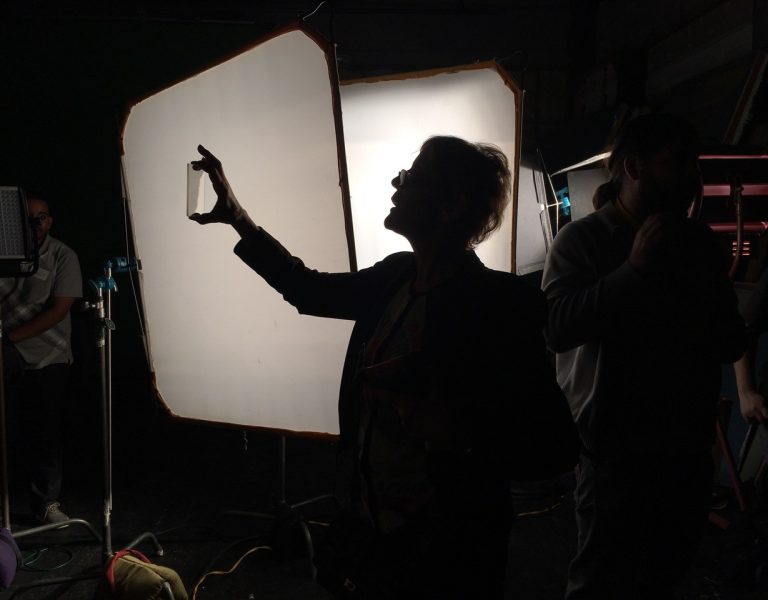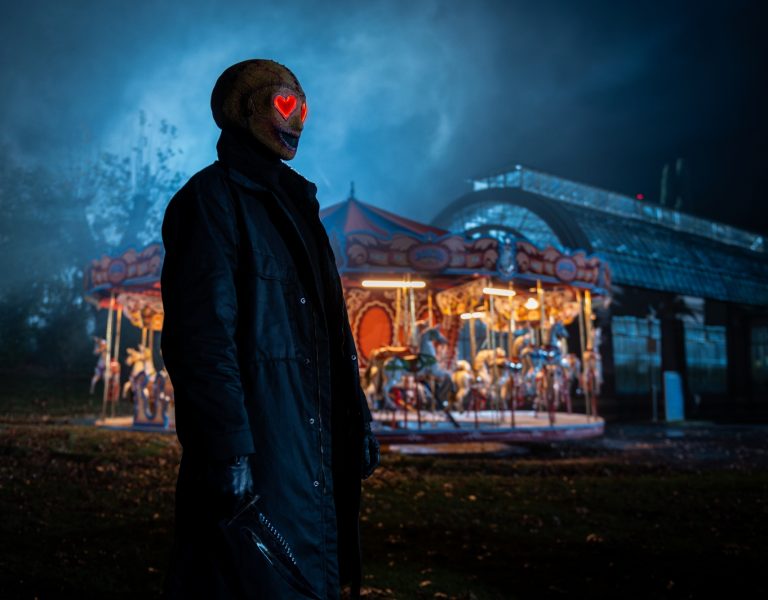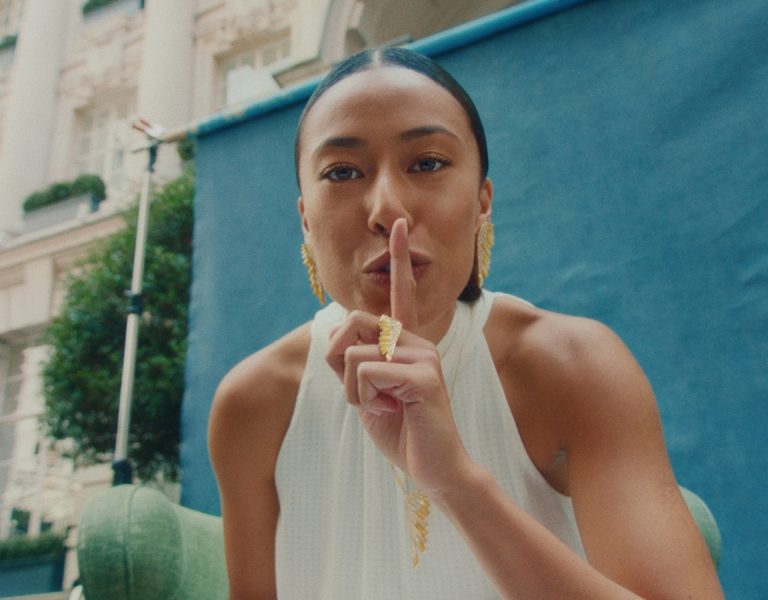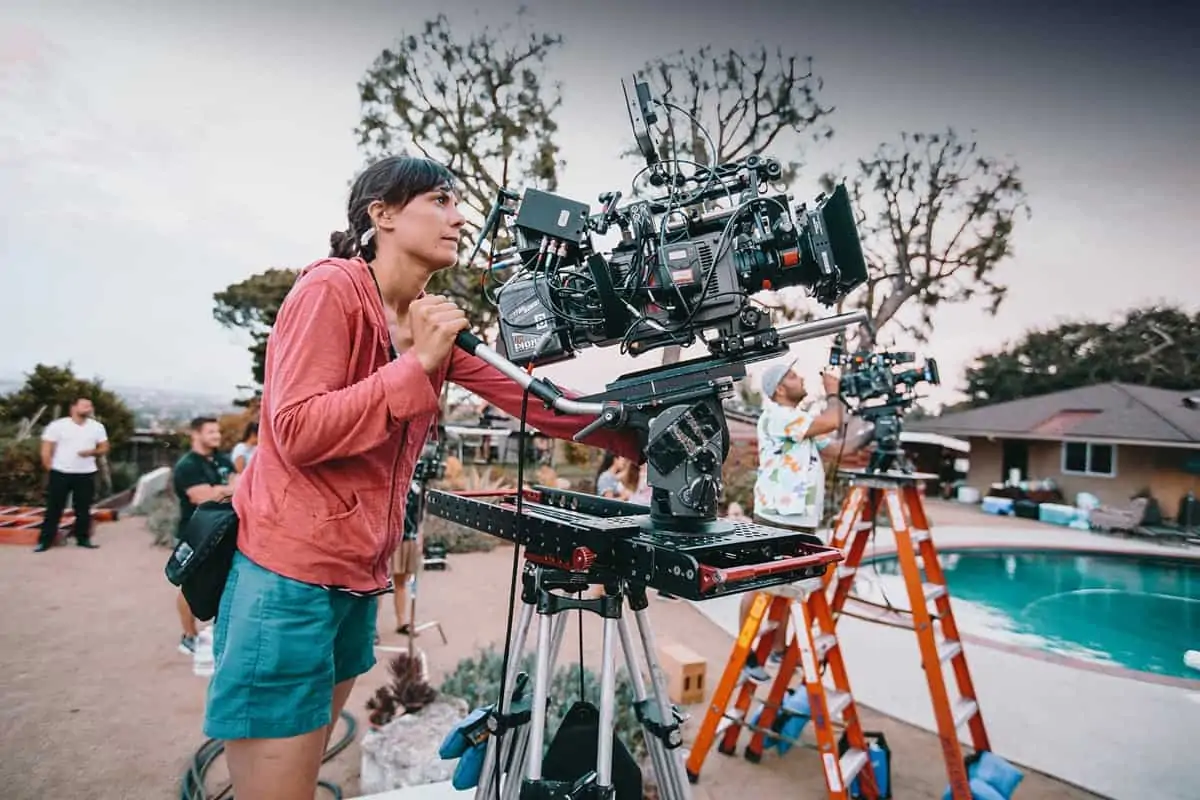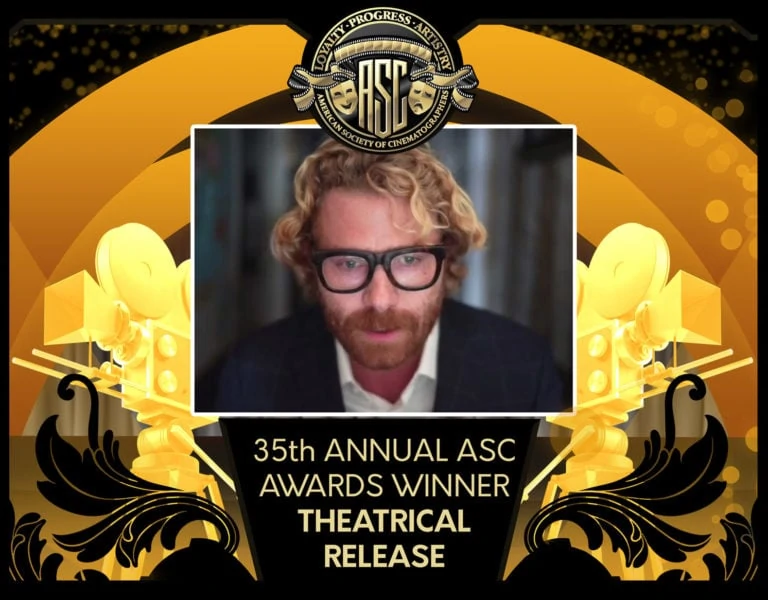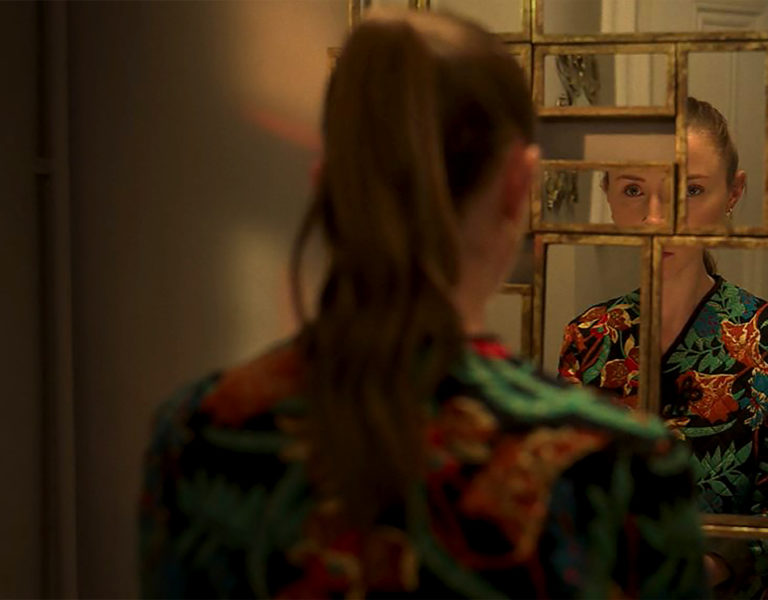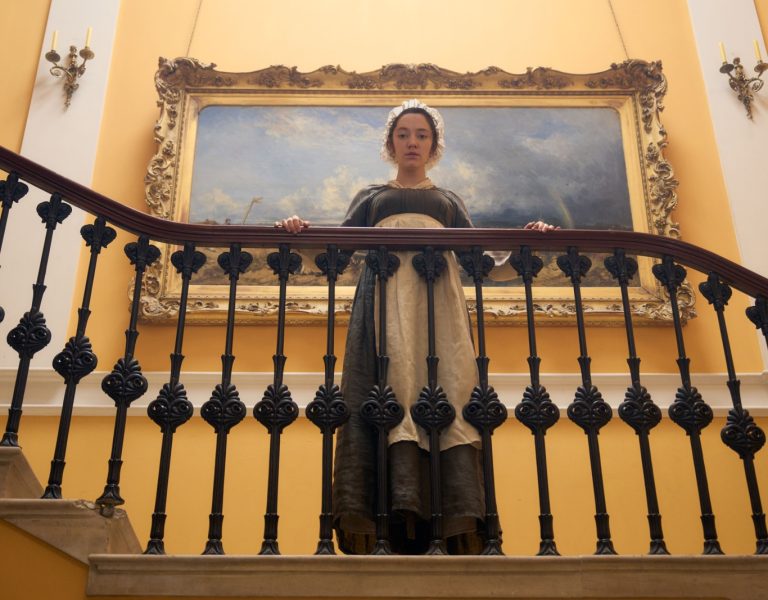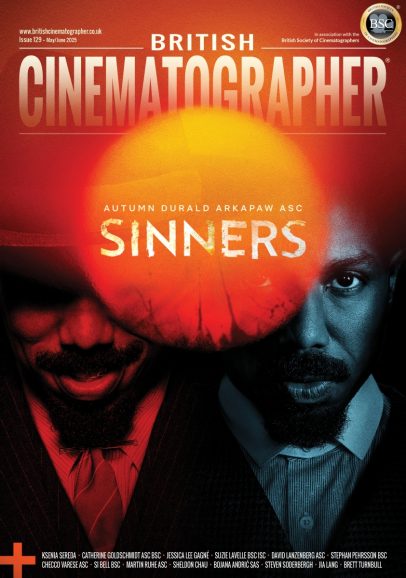GAME ON
Cinematographers Ksenia Sereda and Catherine Goldschmidt ASC BSC explain how they built on series one of The Last of Us—a video game adaptation that became a landmark in television storytelling.
When HBO released The Last of Us in early 2023, it defied the expectations that often accompany video game adaptations. Critics and audiences praised its emotional depth, meticulous world-building and cinematic craft. For a series set in a ravaged post-pandemic America, it resonated not just as genre storytelling, but as prestige television. Much of that success lay in the show’s visual language: expansive yet intimate, grounded yet expressionistic. The bar was set high.
For anyone in need of a recap — or, incredibly, still unfamiliar with the juggernaut HBO show — The Last of Us is a post-apocalyptic drama about survival, trauma, and human connection in a world ravaged by a fungal outbreak that turns people into aggressive, zombie-like creatures. Set 20 years after the collapse of modern civilisation, it follows Joel, a hardened smuggler, who is tasked with escorting a teenage girl, Ellie, across the country. Ellie may hold the key to a cure, and their journey becomes not only a physical challenge but an emotional reckoning, as the two form a deep, surrogate father-daughter bond.
Now that audiences have had time to take a breather, season two arrives and the creative team behind the camera was faced with a dilemma—how to evolve a look and tone that had already earned widespread acclaim without repeating itself.
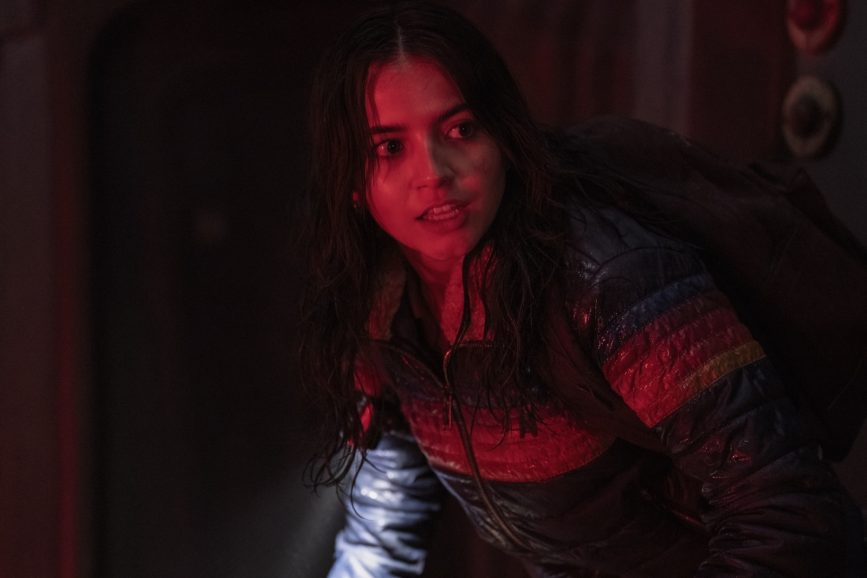
BACK FOR MORE
The second season ventures into more expansive, often harsher environments—from snow-lashed mountain ridges to subterranean urban sprawl. With these shifting landscapes came new emotional states, narrative tensions and physical stakes, all demanding a fresh visual approach. That challenge was met by cinematographers Ksenia Sereda and Catherine Goldschmidt ASC BSC, who split the seven-episode season between them—the former lensing four episodes, the latter three.
Sereda, who shot the pilot and established the show’s original look, decided to switch from the Alexa Mini and standard Cooke S4s used in series one to the Alexa 35 and different lenses for the latest instalment.
“It was a very natural upgrade,” she says. “I wanted to stay within the 35mm sensor family and before season two of The Last of Us, I had the chance to work with the 35 on a movie, which I really liked. It felt like the perfect choice. This time we modified Cooke S4 (to S4x) by exchanging the iris element, which was incredibly exciting. We tested those lenses together with the 35 and the impression they made was amazing. It was the perfect combination, especially when we were testing with twinkly lights in episode one and all the fire and torch scenes later on.”
Flames were very important because there is much night-time firelight in season two. “The 35 handled those highlights and deep shadows beautifully,” Sereda adds. “It worked — not only for creative reasons but also technically, with higher resolution and a more exciting colour workflow.”
Goldschmidt was “a big proponent” of the Alexa 35 for this particular series, having used it on House of the Dragon series two.
“I know that the VFX team was really interested in us shooting with that camera, mainly to capture more detail,” she explains. “For example, in episode two, there are these really high-contrast images with fire and snow. Being able to see detail in both the flames, the snow and also the shadows was crucial.”
Goldschmidt recalls that in her first conversation with Sereda, the latter told her she was afforded “a lot of freedom with the show, in that it’s a similar sort of road movie format” as the first season – sets don’t often repeat, as the characters are often finding themselves in new environments.
“I think the look really suits the story,” she says. “For me, the handheld, gritty approach makes sense because it grounds the show—it keeps you close to the characters at all times and makes everything feel more immediate, more real. Each episode has its own identity. There were seven different directors for the seven episodes, with Craig Mazin and Neil Druckmann overseeing the whole arc. By the time I came on board, Ksenia had already developed a lot of the look with senior colourist Steven Nakamura, so I was definitely building on that. Apart from being entirely handheld, the show is mostly shot with three cameras.”
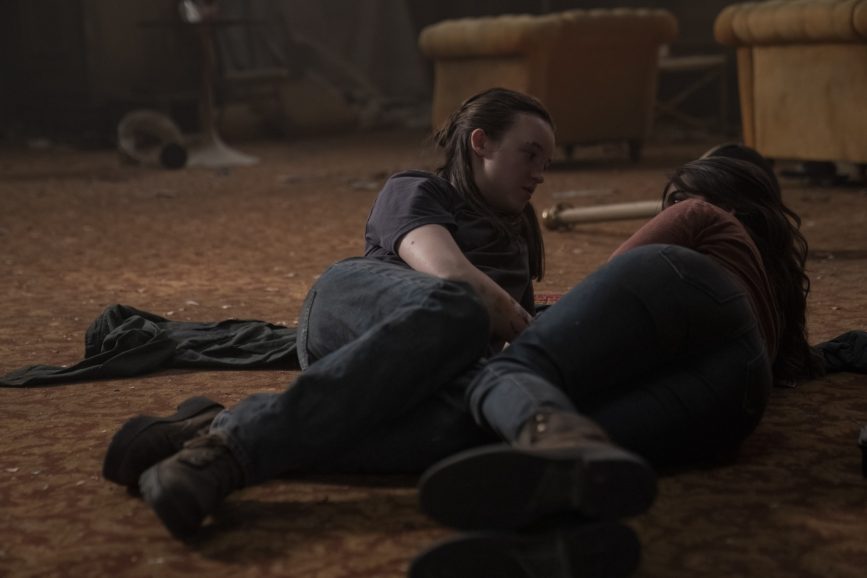
LIGHTING CHALLENGES
Episode two, Through the Valley, marks a turning point in the series, featuring a particularly shocking and emotionally charged scene. Goldschmidt says “it’s a day exterior episode for the most part, so you could easily watch it and think I didn’t light anything, but I actually had to work very hard to make it all feel like one seamless, snowstorm-y day. I was controlling the daylight wherever I could, since snowstorms are never sunny, but we definitely had plenty of sunny shoot days. For the Jackson backlot, I had three construction cranes with 40’x60’ blackouts on them. And the Chalet where Joel dies was a real location with two-storey, south-facing windows – so I had to do a lot of sun control there too.”
She drew heavily on her experience from House of the Dragon, incorporating many of the same techniques—particularly the use of Creamsource Vortex 8 arrays that she could soften.
“I used the Vortex arrays in the Chalet and also for the Wall in Jackson. Because I was so often denying the sun, I had to replace it with something big and soft,” Goldschmidt adds. “There are also fiery explosions outside the wall, so we did some tests to figure out the best approach for that. I ended up using 12x light HPLs. We looked at various gels in the test, but wound up just keeping them clean.”
Sereda says that each scene—let alone each episode—presented a different lighting challenge, with a particularly tricky one in episode one. “There’s a supermarket sequence where Abby falls through the ceiling – the design gradually shifts from darkness to brighter patches of light, culminating in full sunlight,” she adds. “That took a lot of careful planning between production design and lighting. I’m a bit obsessed with a mix of SkyPanels and tungsten lights, so we used SkyPanel S360s for the glow and pushed through with 20K tungsten sources. I love the colour and contrast of tungsten — it interacts beautifully with our sets. In Joel’s house in episode three, I wanted the ground floor to feel cold and empty, but as Ellie moves upstairs, it gets progressively warmer and brighter — reflecting her emotional journey. We also shifted from wider to closer shots, getting physically closer to her only when she finds Joel’s jacket. In episode five, the cemetery scene was another challenge. We needed the exact sunlight positions, so we split it across two days — wide shots on one day and close-ups on another — to keep the light consistent during magic hour.”.
Sereda says the team also “kept haze levels very low — no more than 1%” — because she likes deeper shadows. “I want light and darkness to exist together, rather than filling everything with a soft ambience,” she continues. “That approach really helped in places like the hospital in episode five, where characters emerge from shadow and in the big stalker sequence.”
Goldschmidt says there was a big lighting challenge in episode four when the team was filming in the subway tunnel—the motivation there was flares. “We did a lot of testing with real flares, because we knew there were certain shots we wanted to light using the real thing,” she explains, “but most of the time, we couldn’t actually use them. We had a lot of health and safety conversations and although it was broadly considered safe, the smell was awful—especially for the actors and crew. We were in an enclosed space, and it just wasn’t workable. So we ran tests to find a suitable substitute. In the end, it was a combination approach. Props and lighting collaborated on some LED prop flares that we could wire back to our desk and control. It was important to make them look as much like the real thing as possible, because these appeared on camera and VFX replaced the flare end in post. We matched their colour and flicker to the real flares. Then, we used SkyPanels, Astera tubes, and other LED sources to reinforce the look—again matching the colour temperature and flicker pattern.”
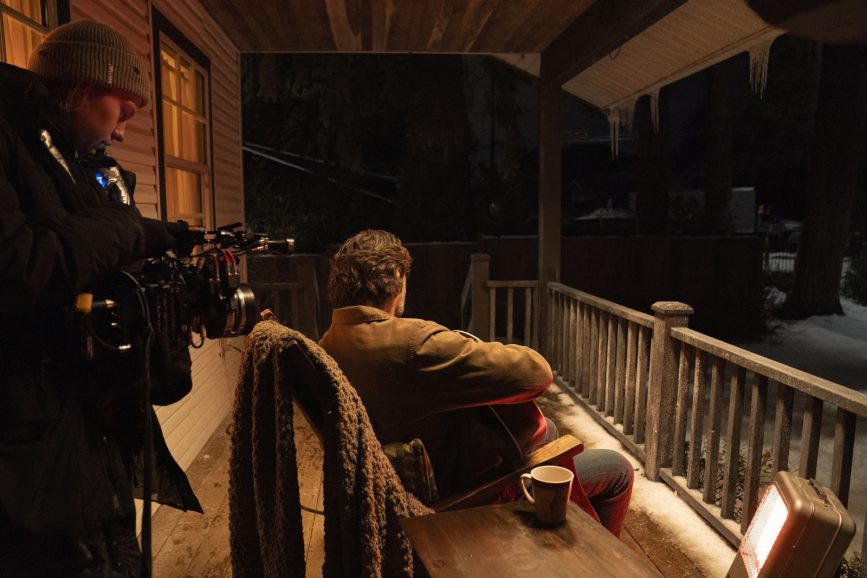
LEARNING CURVE
In terms of the biggest learning curve for Goldschmidt, she “shot more action on this show than I ever had before” and she worked in more extreme Alpine conditions than she’d previously experienced”.
She points to episode two and “Abby’s first proper lookout moment” whilst she’s on patrol, scanning the landscape for signs of Jackson. There’s a small but important scene at the start of episode two, where Abby is on patrol and first spots Jackson in the distance.
“Shooting in the mountains was a real logistical challenge,” she explains. “We filmed in this amazing place—Fortress Mountain in Kananaskis, Alberta. It used to be a ski resort, but it was shut down some years ago and turned into a filming location. The crew that runs it is really experienced in helping productions get up into the mountains, so that made a huge difference. The whole setup felt like Mad Max on snow. We had a base camp the trucks could reach, but from there, all the gear had to be loaded into snowcats and snowmobiles to travel further up the mountain. Every morning was this convoy of engines roaring up the slopes—totally surreal. When we initially scouted the mountain, they took us as far up as they could. My director, Mark Mylod, looked even higher and asked, “How do we get up there?” They said, “Well, you could climb… but we’d need to do a safety test first.”
Goldschmidt and her crew, “with rigged ropes, literally had to climb hand over hand” to reach the highest lookout. “But the view at the top was absolutely breathtaking—it was totally worth it. Of course, we then had to decide who and what we could bring,” she says. “Because of avalanche risk and access issues, we were limited to about 15 people. It was tough—but unforgettable. I operated that scene with Kaitlin, which I loved.”
She adds that for that particular scene, the team wanted to bring a drone up, just to capture the location—”right on the edge of this incredible precipice” with an amazing view. “But we weren’t planning to shoot there for long; it was just a couple of shots of the stunt double, really,” he continues. “We actually had to get those drone shots before climbing the mountain, because once we were up there, we had all our gear and crew in place, and things got much more complicated. So we got those shots done first at the base, and then made the climb with everyone.”
The challenges didn’t start and end there.
There’s a sequence in episode two where Abby crawls under a collapsing fence “and that required some real thought”, testing and planning. “The goal was to make the moment feel intensely claustrophobic,” Goldschmidt says. “How low can the fence go while still allowing her to squeeze underneath? And then, how could we track with her as she crawled? I decided early on that the best solution was to use the DJI Ronin 4D. It’s both a camera and gimbal in one, so it’s very compact. We mounted it on the end of a Filmotechnic Technoscope F27 —an extremely lightweight, portable telescopic arm that we could remove from its base and lay directly on the ground. That let us get the camera as low as possible, allowing us to push and pull with her, to really stay in her POV. It ended up being the perfect tool for that sequence, but it definitely took a lot of cross-departmental testing to get right.”
Goldschmidt was also closely involved in the VFX process, especially for episodes two and seven. “I worked really closely with Alex Wang our VFX supervisor, who’s fantastic,” she says. “One of the best things about working with Alex is that he always supports us shooting as much practically as possible. Early conversations were about what we could do in-camera versus what would need help from VFX.”
The battle sequence in episode two, for example, was so epic it had already gone through a rough previs phase before director Mark Mylod and Goldschmidt even started. She says that previs helped with early budgeting. “But once we were on board, we revised it, gave notes, and re-storyboarded parts,” she adds. “It was a very collaborative, iterative process.”
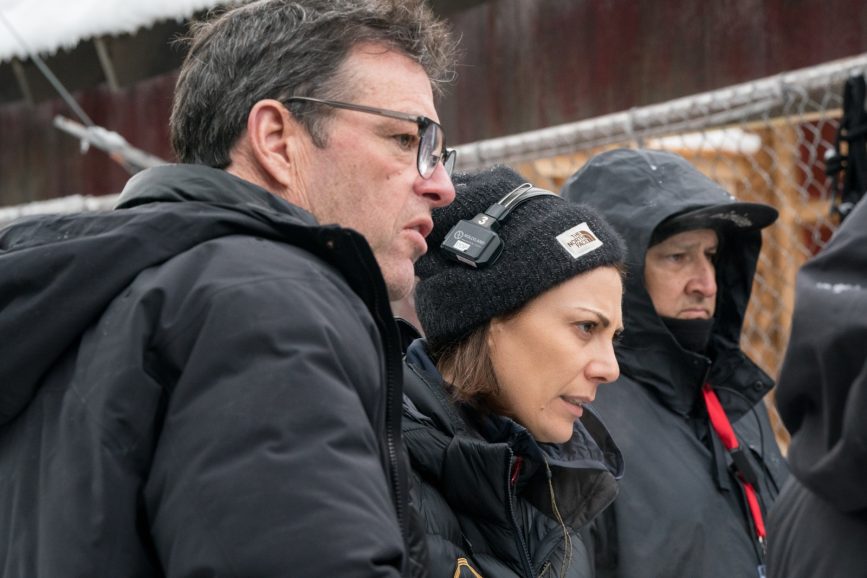
TOUGH SALE
Goldschmidt says one major challenge was selling the snowstorm throughout episode two – huge collaboration between her, VFX and special effects. “We tested early on to see what special effects could provide—of course, what they could do on the backlot was different from what we could manage up on the mountain,” she continues.
Goldschmidt and Wang studied a lot of reference footage from real blizzards and what stood out to the DP was how foggy and difficult visibility becomes during an actual snowstorm—”the lens can fog up” and the whole scene goes soft. “Our special effects team did an amazing job providing smoke and atmosphere, but sometimes it wasn’t quite enough in-camera,” she recalls. “I tested the Tiffen Night Fog Filters, and wound up carrying a couple sets which we used almost like low-con filters. It just added another layer to whatever atmosphere SFX was doing.”
Some shows have such a successful first series that any follow-up — if it even gets beyond a second — can buckle under the weight of expectation. It’s the industry’s equivalent of the ‘second album syndrome’ often experienced by musicians.
Sereda was acutely aware of this when she agreed to lens the second series, but she was reassured by the chance to collaborate with the show’s two exceptional creators.
“I feel very lucky to be a part of this show with Craig and Neil, whose vision is so strong,” she says. “Visually, it’s such a rich world, and I’m proud to help shape its visual language. There’s always pressure to keep growing and pushing the look further. In season two, the characters are older and the storyline is much more expansive, which opened up new visual opportunities. Each episode is so dense — it feels like shooting seven different movies, especially because each one has a different director.”
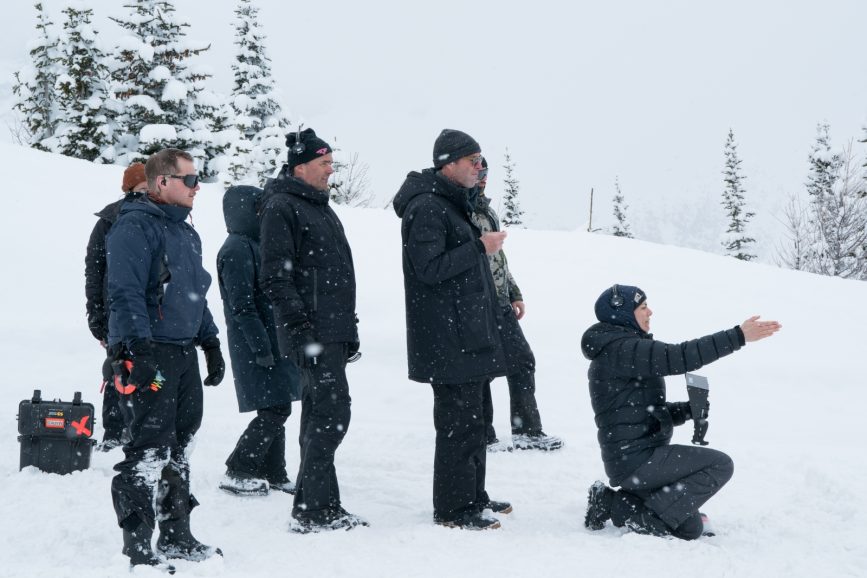
Each instalment presented its own challenges, Sereda notes, but a few stand out personally. “Episode three, for example, deals with a major emotional shift for Ellie after the events of episode two,” she continues. “Shooting the scenes in Joel’s house, which I loved from the game, was really exciting. Then in episode six, the museum sequence was a huge favourite — it took a lot of development to get right.”
She also highlights the action-heavy episode five — the storage yard, the forest chase — and its fast pace, with multiple lighting environments, including darkness cut by scouting searchlights: “those are iconic in the game,” she says.
But for Sereda, the penultimate episode — also her final one — proved one of the most filmic experiences of her career. “It’s a standalone story about how Ellie and Joel’s relationship evolved over five years, and the whole episode feels dreamy, starting with Ellie’s close-up, bathed in backlight, very similar to Sarah’s opening shot in season one,” she explains. “We also worked hard on the scene with Eugene’s death — we sun-blocked a large area and added pink glows from ARRI SkyPanels to create a blue hour look with a soft pink tinge. It was incredibly beautiful.”
Goldschmidt was handed lensing duties on episode seven – the finale – which she says “was a thrilling way” for her to close the series. “No spoilers, but it’s quite a dark episode, both thematically and visually,” she adds. “My advice to people watching on their TVs at home is: please turn off your overhead lighting, shut your blinds and enjoy the ride!”



